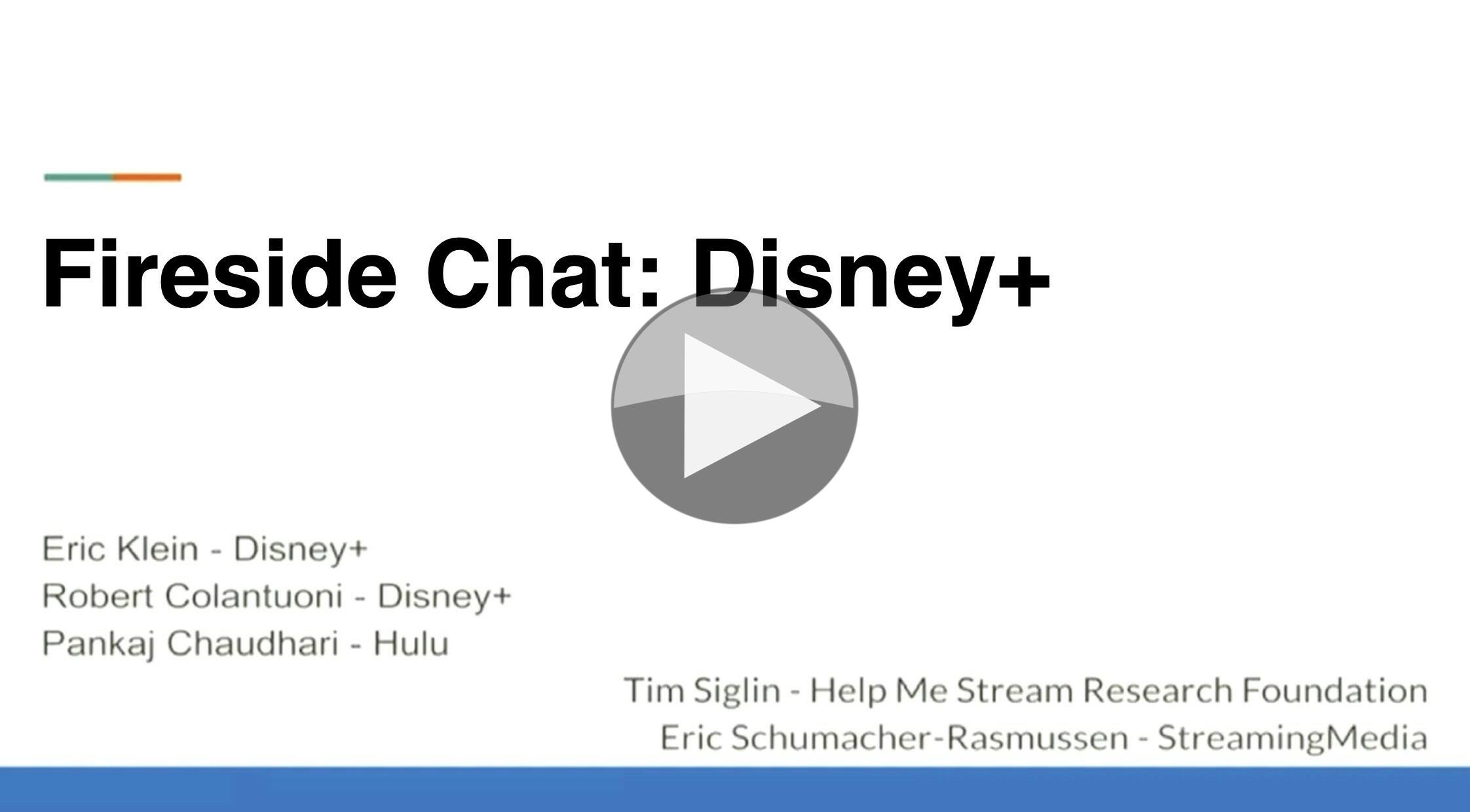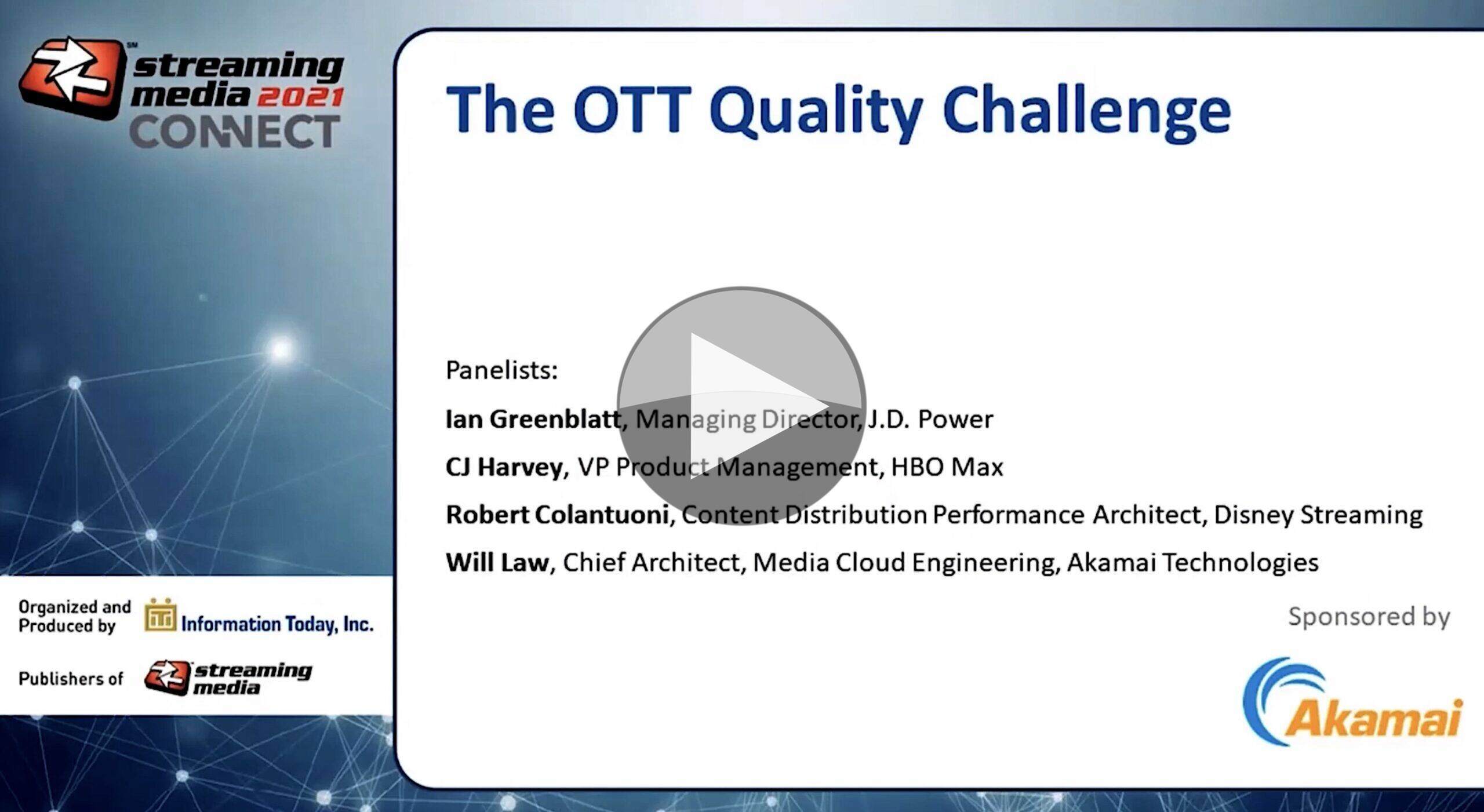Disney Streaming encompasses ESPN+, Hulu, Star as well as the much discussed Disney+. The latter was launched just a month before the initial detection of Covid-19 but all the services have been seeing continual roll-outs globally ever since. And it’s because of this global perspective, and one of perpetually dealing with growth, that today’s conversation with Disney as part of Streaming Media Connect is so interesting.
Eric Klein, Pankaj Chaudharim and Robert Colantuoni join moderators Tim Siglin and Eric Schumacher-Rasmussen to explain their approach to growing their streaming business. We’ve heard from Disney Streaming Services (DSS) before on The Broadcast Knowledge so we know that they have a strong interest in pushing forward Open Caching but also building their own solutions. Today’s video only reinforces that view.
When asked about DSS’s route to market, Eric points out that they have a ‘mesh’ that takes in to account that a single route to market for every location isn’t going to work. There are different limitations and constraints for every geography so whether it’s using multi-tenanting or Open Caching, for example, the mix needs to be tuned for each launch. Eric says that launching into a territory is a difficult time as they never know where exactly their customers will be and how much bandwidth will be needed.
Rob explains that Disney has a ‘Decision Science’ department which has helped them build models of new territories partly based on new data and partly based on finding similar locales already served by Disney Streaming Service. Talking about Open Cache, Rob says this is a big part of the mesh they run but sending out instructions is only one part of the challenge. The other is getting back data quickly enough and in the right format so that DSS can quickly understand it and use it for business decisions. You need to have a control plane that can handle all of these data sources and track performance relative to the options in those regions.
Pankaj adds that they constantly work with providers to ensure a base level of functionality like TLS 1.3, as an example, as well as helping them implement APIs from the Streaming Video Alliance to understand capacity. It’s critical for them to be able to understand the CDN’s capabilities as they wax and wain thanks to ‘internet weather’ as Rob puts it.
Eric talks further about how they work with their partners helping them to deal with the traffic which is coming their way and encouraging them to be part of the CTA or SVA so they can keep on top of the latest developments and also have a voice in what happens. Eric then talks about environmental work and discusses how PVoD, i.e. the latest Mulan film changes the way they deliver.
Watch now!
Speakers
 |
Eric Klein Director of Media Distribution & Technology, CDN Disney Streaming |
 |
Robert Colantuoni CDN Performance Architect, Disney Streaming Services |
 |
Pankaj Chaudhari Architect – Video Delivery, Hulu |
 |
Moderator: Eric Schumacher-Rasmussen Editor in Chief, Streaming Media Magazine |
 |
Moderator: Tim Siglin Contributing Editor, Streaming Media Magazine |






